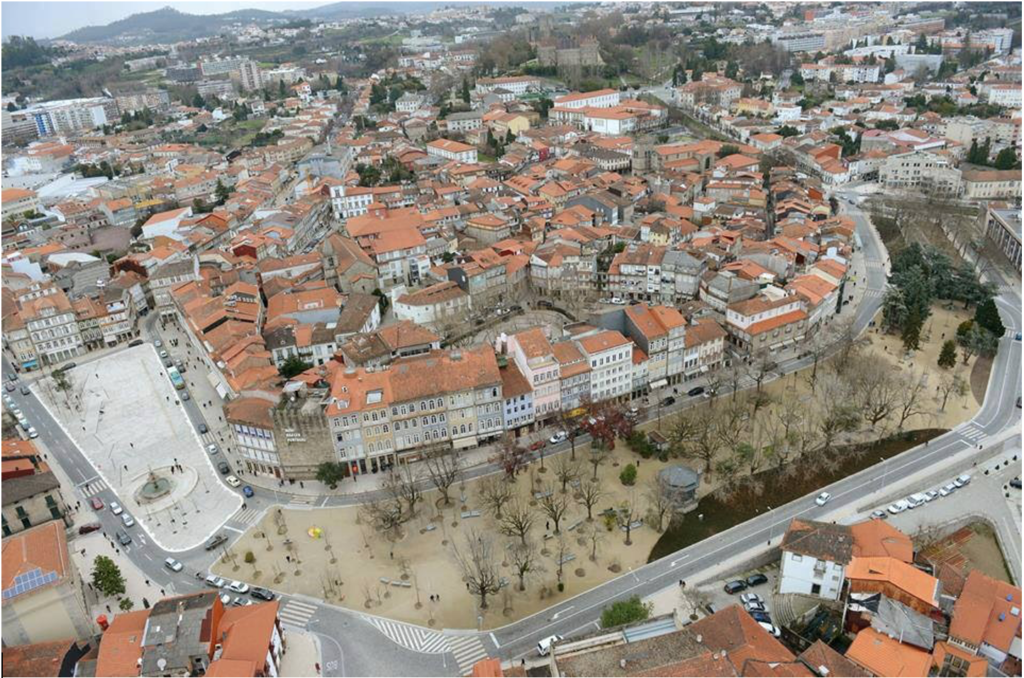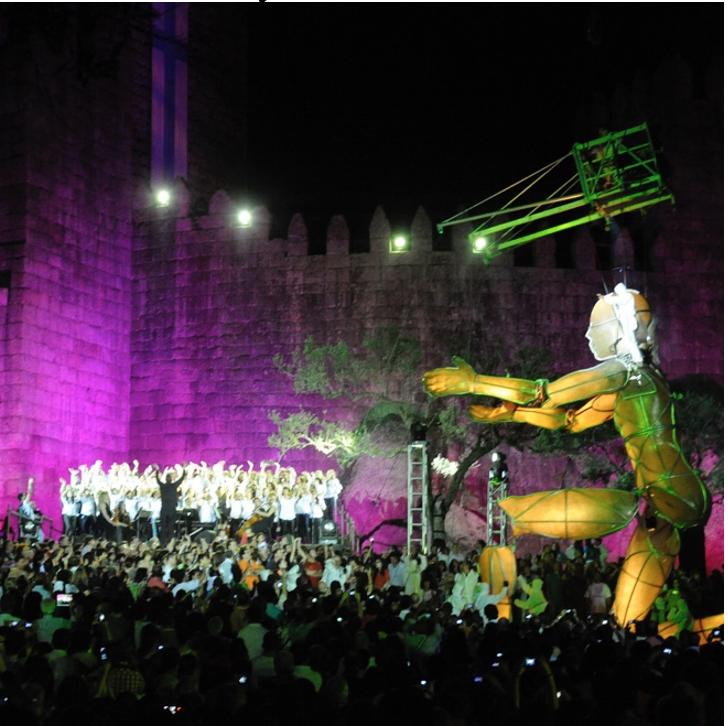Accomodation
City of Guimarães
Guimarães is administratively a county composed by 48 villages that fall within an area of 242.32 km2, with about 160,000 inhabitants. It is situated north-west of Portugal, and is a part of the old province of Minho, known as the cradle of the Portuguese nation, and is distant approximately 350 km from the capital, Lisbon and about 50 km from the city of Porto.
The climate of the region is cold and rainy in winter and the summers are warm and rather humid, with relatively wide annual temperature variations, mainly due to its not being too near the coast and to the nature of its settings (surrounded by hills and enclosed in the valley).
The roots of Guimarães, a city of medieval origins, go back to the remote tenth century, and it is acknowledged as the cradle of the nation and of Portuguese identity. Its magnificently preserved historic centre has been classified as Cultural Heritage of Humanity by UNESCO, since December 2001. The city was European Capital of Culture in 2012.

Heritage
The restoration of the historic centre of Guimarães has involved the use of traditional building materials and techniques, since beyond the recovery and preservation of the built heritage, the aim has been to preserve the entire resident population by providing them with better living conditions.
The traditional construction techniques in Guimarães are derived from practice, from oral transmission bringing the past into the present, continued experience and craft. It is in the combination of these factors that the inherent wealth of traditional techniques resides, Man being the agent of practice and of tradition.
The improvement of public spaces in historic settings has obvious consequences for a better quality of life in these dense urban networks. In historic towns the lack of domestic space was always made up for by the use of public spaces and facilities (…).
The authenticity of the medieval urban fabric of the historic centre of Guimarães, of a spontaneous nature, is absolute, since it bears testimony to more than a thousand years of occupation, and contains a particular type of construction. A large part of the buildings now standing go back to the seventeenth century and were erected using traditional building techniques.
Culture
For several years now Guimarães has been investing increasingly in a cultural program that rests upon 6 fundamental criteria: regularity in the offer of culture, quality of the projects presented, diversity of style and art forms divulged, favouring contemporary productions, and upholding the strength and coherence of the project.
Guimarães Jazz, the Gil Vicente Festivals (theatre) or the Encontros da Primavera (classical music), are examples of consolidated events with a great public impact, in some cases international.
Once such events were well established and consolidated, new challenges appeared: favouring local and national productions, carrying out training projects (for professionals and non-professionals) and reaching a larger, more informed and more loyal audience.
The strong investment in culture, winning over a more and more demanding public, the demand for original artists and the political will to establish Guimarães as a city of culture determined the building of the Vila Flor Cultural Centre. The work that has begun there represents a strong boost for the cultural dynamics initiated in recent years.


Gastronomy
Perhaps no other municipality presents such a genuine gastronomic personality, no doubt marked by the origins of the Portuguese nation. Guaranteeing a character of its own, and perhaps showing the influence of other lands, given its geographical location (near the Douro river, but also close to the Minho), it appears as a true common heritage of the Entre- Douro e Minho region.
From among the recipes, we feature tasty sopa de nabos (turnip soup), a well-known country dish made over the long and gentle fire of the ancient hearths. For fish dishes, bacalhau (salt cod) da seca de Viana or da cura Inglesa is an example of the so typical bacalhau racheado. But one might prefer Bacalhau de Rendinhas, accompanied by red bean rice and thin strips of fin fried with olive oil and garlic.
Influenced by the lands of the Minho, Papas and Arroz de Sarrabulho, lamprey with rice or bordelaise; From Póvoa and from Matosinhos, raia (ray), pescada (hake), and sardinha d’alvorada.
And what else is cooking in Guimarães? Four great marvels of Vimaranense cookery: Vitela assada (roast veal); cabrito mamão(kid) with rice enriched with its own giblets and cabidela de cabrito; the famous pé descalço com rodelas de salpicão; bucho recheado(stuffed pork stomach). As for desserts, toucinho do céu (egg and almond cake), mexidos (made of bread, ground almonds, egg yolks, sugar, Port wine, raisins and pine seeds), rabanadas (a kind of French toast), a nice and creamy aletria (a pasta dessert), arroz doce and toasted leite creme (egg and milk custard).
To accompany all of these delicacies, our vinho verde, either white or red, will liven up every flavour with the taste of its slight fizz.
